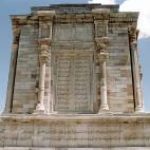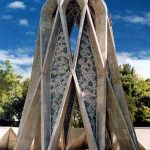10 Days / 9 Nights To Know Famous Poets of the Land of Poem & Literature
The brief itinerary
Day1:Arrive in Tehran
Day2:Tehran
Day3:Fly to Mashhad
Day4:Mashhad, Excursion to Neishabour
Day5: Fly to Shiraz
Day6:Shiraz, Excursion to Persepolis & Pasargadae
Day7:Drive to Isfahan
Day8: Isfahan
Day9: Drive to Tehran via Kashan
Day10: Departure

Day 3 [Tehran] [Razavi Khorasan]
…………………………………………………………………………………………………………………………………………………
Note
Ferdosi was the great Persian poet and myth maker who lived over 1000 years ago. Persian language is based on and has stayed solid on large volumes of his poetry called Shahnameh or the stories of kings. O/N Mashhad.
Day 4 [Razavi Khorasan] [Razavi Khorasan]
Day 5 [Razavi Khorasan] [Fārs ]
…………………………………………………………………………………………………………………………………………………
Note:
Hafez is the world renown for his love and mystical poetry. Gote, the famous German poet praised Hafiz tremendously. Hafiz Poetry Night. O/N Shiraz.
NOTE:
Pasargadae, UNESCO World Heritage-designated: The tomb of Cyprus the great, also known as Cyrus II or Cyrus of Persia, the founder of the Persian Empire under the Achaemenid dynasty (559–529 BC). He was a righteous human being because at the time of victory, he was generous toward defeated people. Being a freeman, he won the heart of his people, permitting them to worship their gods. He was extraordinarily peerless in all over the world. Comparing Cyrus’ manner with Semi’s rulers, one feels great pleasure for the Persian liberality and generosity and truly regards the Persian as the instructor of human race).
Persepolis: One of the most majestic ancient monuments. Its ancient name was Parsa to ancient Persians, its modern name is Takht-e Jamshid, (Persian: Throne of Jamshid), to Iranians it was the capital of the Achaemenid kings of Iran (Persia). Persepolis is located about 50 kms northeast of Shiraz in the province of Fars in southwestern Iran. It was set on fire by Alexander upon his defeat of Darius III)
Naghsh-e-Rostam , Where you will see 4 tombs in the mountain of Darius I, Artaxerxes I, Xerxes I, and Darius II Eight stone carvings from Sassanians dynasty below the Achaemenians tombs showing conquests of kings; believed was created to celebrate the victory of Sassanians king, over the Romanian invader
Naghsh-e-Rajab, a beautiful stone carved from Sassanians dynasty (224-651 A.D.), at your leisure in the morning.
Quran Gate: A historic gate in the southern-central Persian city of Shiraz which was first built By the time of the Zand dynasty, it had sustained a lot of damage, so it was restored and a small room on top was added, in which were kept hand-written Qur’āns. Travelers passing underneath the gates were believed to receive the blessing of the Holy Book as they began their trip or journey from Shiraz.
NOTE
Naghshe Jahan: an important historical site and one of UNESCO’s World Heritage Sites and the second biggest square in the world. It is 160 meters wide by 508 meters long, an area of 89,600 m2. The square is surrounded by buildings from the Safavid era.
Ali Qapu Palace: A grand palace in Isfahan was built by decree of Shah Abbas the Great in the early seventeenth century. It was here that the great monarch used to entertain noble visitors, and foreign ambassadors. Shah Abbas, here for the first time celebrated the Now – ruz /New Year’s Day/)
Imam Mosque: UNESCO World Heritage Site (Built during the Safavids period, it is an excellent example of Islamic architecture of Iran, and regarded as the masterpiece of Persian Architecture and one of the everlasting masterpieces of architecture in Iran and all over the world. Its construction began in 1611, and its splendor is mainly due to the beauty of its seven-color mosaic tiles and calligraphic inscriptions.
Sheikh-Lotfollah Mosque: One of the architectural masterpieces of Safavid Iranian architecture, standing on the eastern side of Naghsh-e- Jahan Square, It was built by Shah Abbas I of the Safavid dynasty. The building functioned as a prayer hall and lecture hall
NOTE
Vank Cathedral: of the first churches to be established in the city’s Jolfa district by Armenian immigrants settled by Shah Abbas I after the Ottoman War of 1603-1605
Chehel sotun (40 pillars): An enchanting pavilion in the middle of a park at the far end of a long pool, built by Shah Abbas II to be used for his entertainment and receptions, The name, meaning “Forty Columns” in Persian, was inspired by the twenty slender wooden columns supporting the entrance pavilion, which, when reflected in the waters of the fountain, are said to appear to be forty
Hasht Behest (8 paradises): dates back to the time of Shah Suleiman and is located in the middle of the Hasht Behesht Garden. The palace was the king’s residence. A two story palace, with several rooms and cubicles. Its beautiful exterior is decorated with bricks and tiles. The palace’s surroundings have been changed into a public park.
Sio se pol-33 bridges: one of the eleven bridges of Isfahan highly ranked as being one of the most famous examples of Safavid bridge design. It consists of two rows of 33 arches. There is a larger base plank at the start of the bridge where the Zayandeh River flows under it, supporting a tea house.
NOTE
Fin garden: Historical Persian garden. It contains Kashan’s Fin Bath, where Amir Kabir, the Qajarid chancellor, was murdered by an assassin sent by King Nasereddin Shah in 1852.
The Boroujerdi ha House or Khāné-ye Borūjerdīhā is a historic & fantastic house built in 1857, by architect Ustad Ali Maryam, for the bride of Haji Mehdi Borujerdui, a wealthy merchant. The bride came from the affluent Tabatabaei family, for whom Ustad Ali had built the Tabatabaei House some years earlier. It consists of a rectangular beautiful courtyard, delightful wall paintings by the royal painter Kamal-ol-molk, and three high wind towers which help cool the house to unusually cool temperatures.
The Tabatabaeis’ House or Khaneh Tabatabaei-ha is a historic house built in the 1840s for the affluent Tabatabaei family.It consists of a four beautiful courtyards, delightful wall paintings with elegant stained glass windows, and all the other classic signatures of Traditional Persian residential architecture such as biruni and andaruni.
Day 10 [Tehran]
A morning flight allows for hometown connections.

Reserve Now
This form is NOT a reservation for a tour. You will be contacted to discuss the availability of the tour times you requested and to confirm a scheduled tour. Thank you for your interest in visiting our tour.

